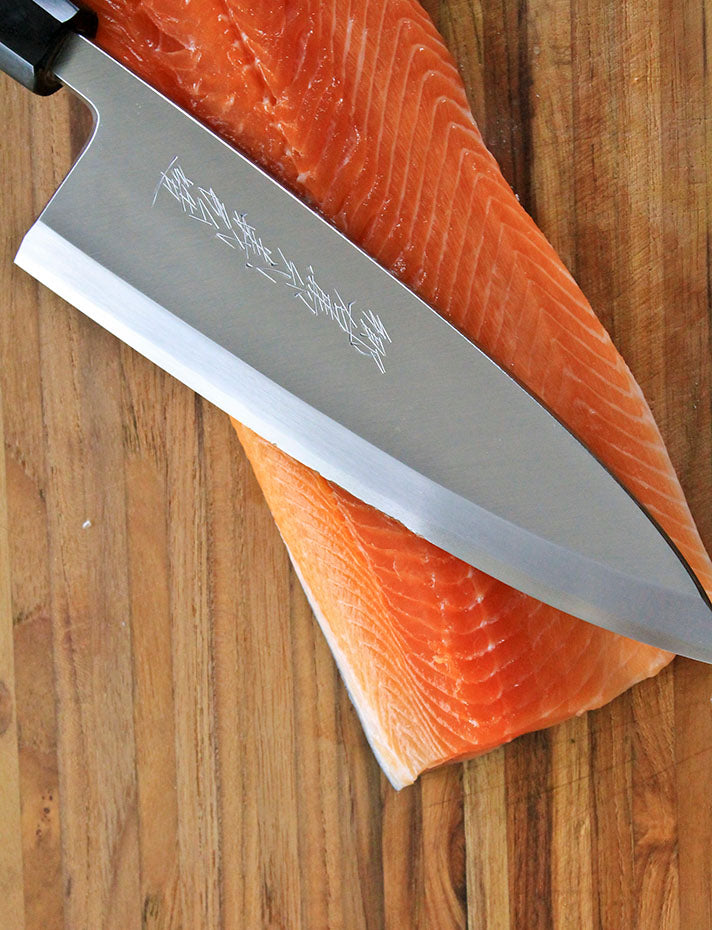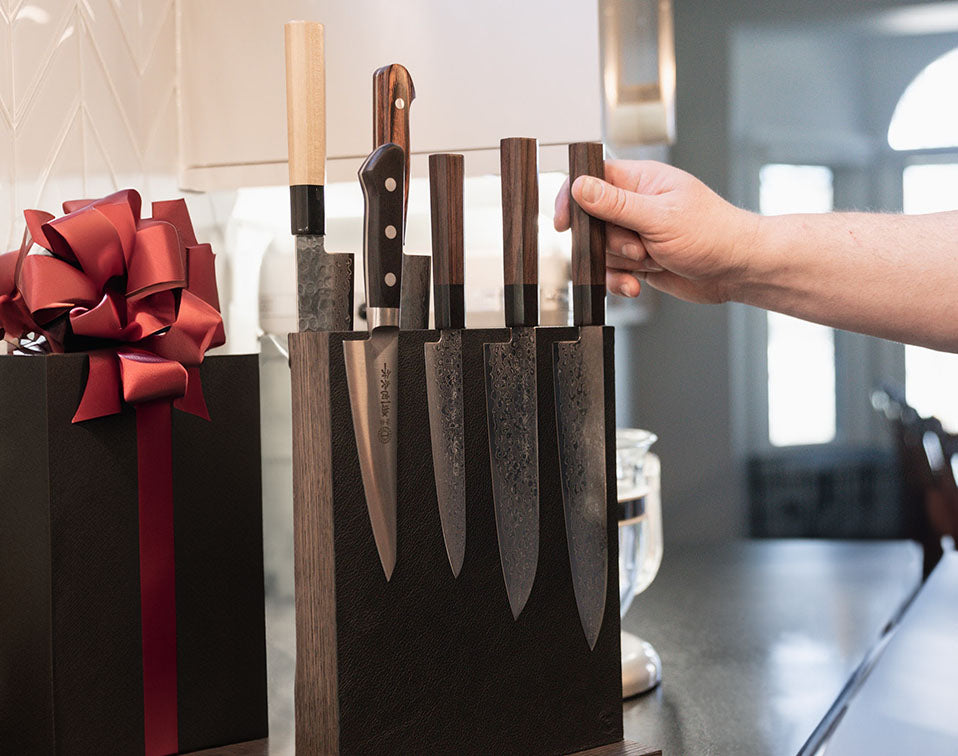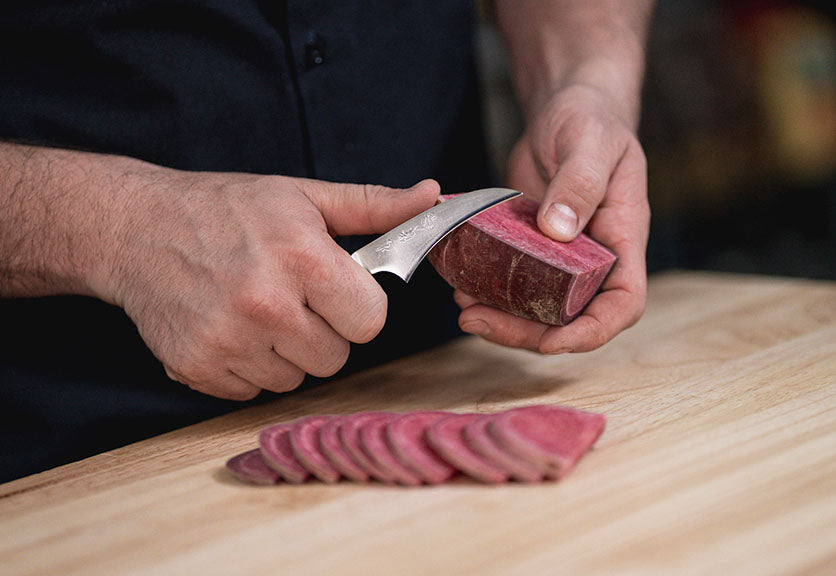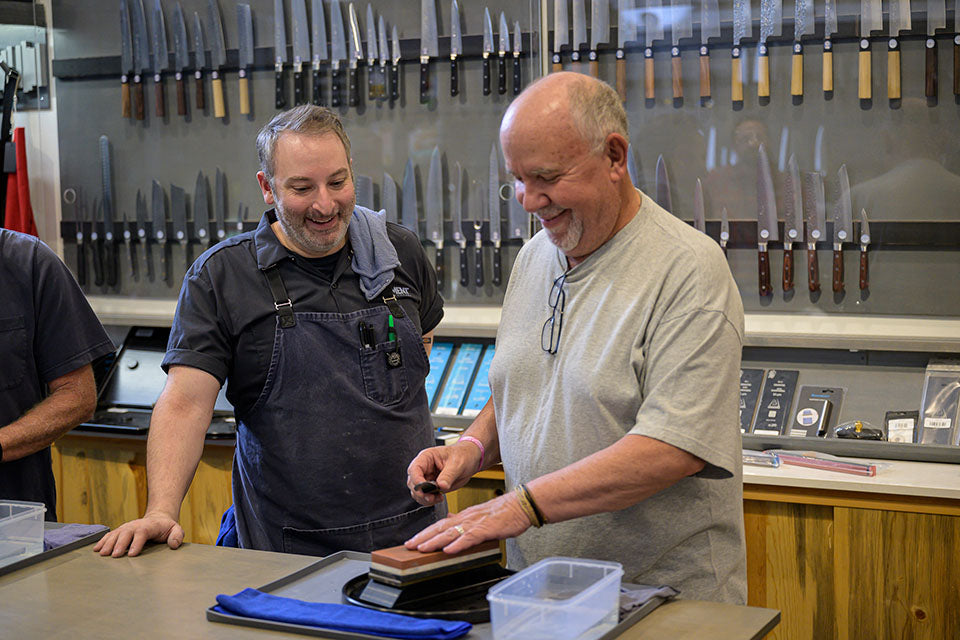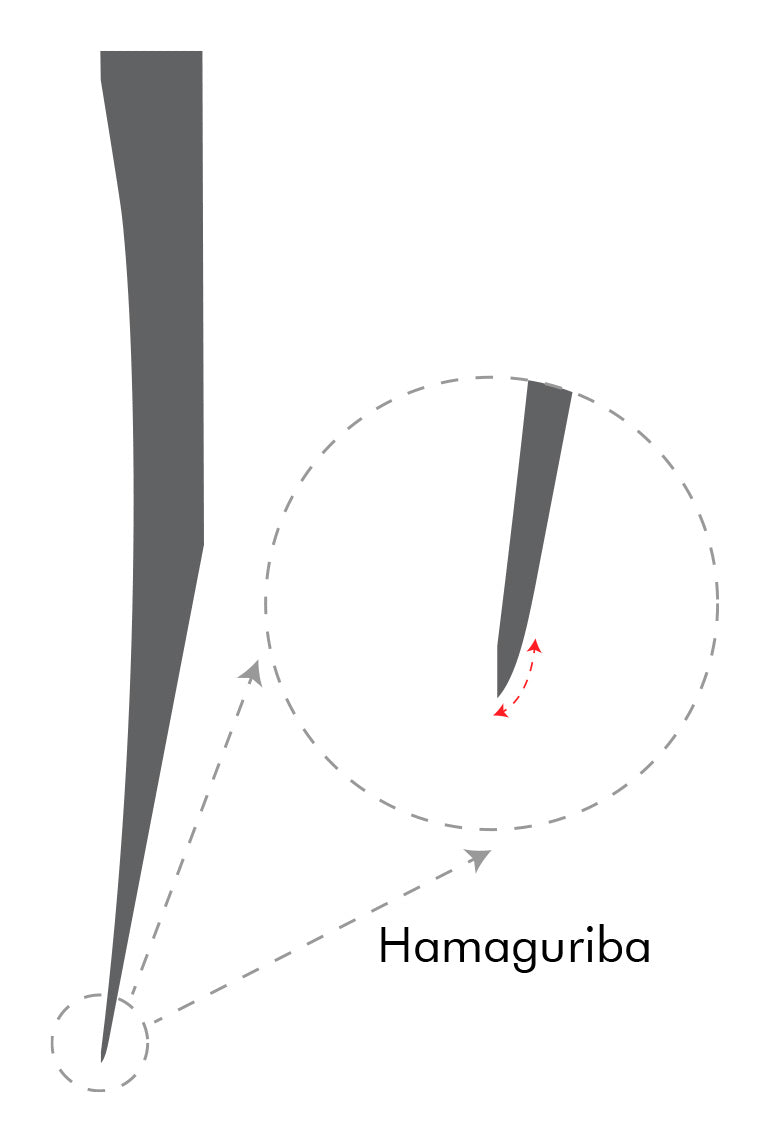Kitchen Knife Anatomy
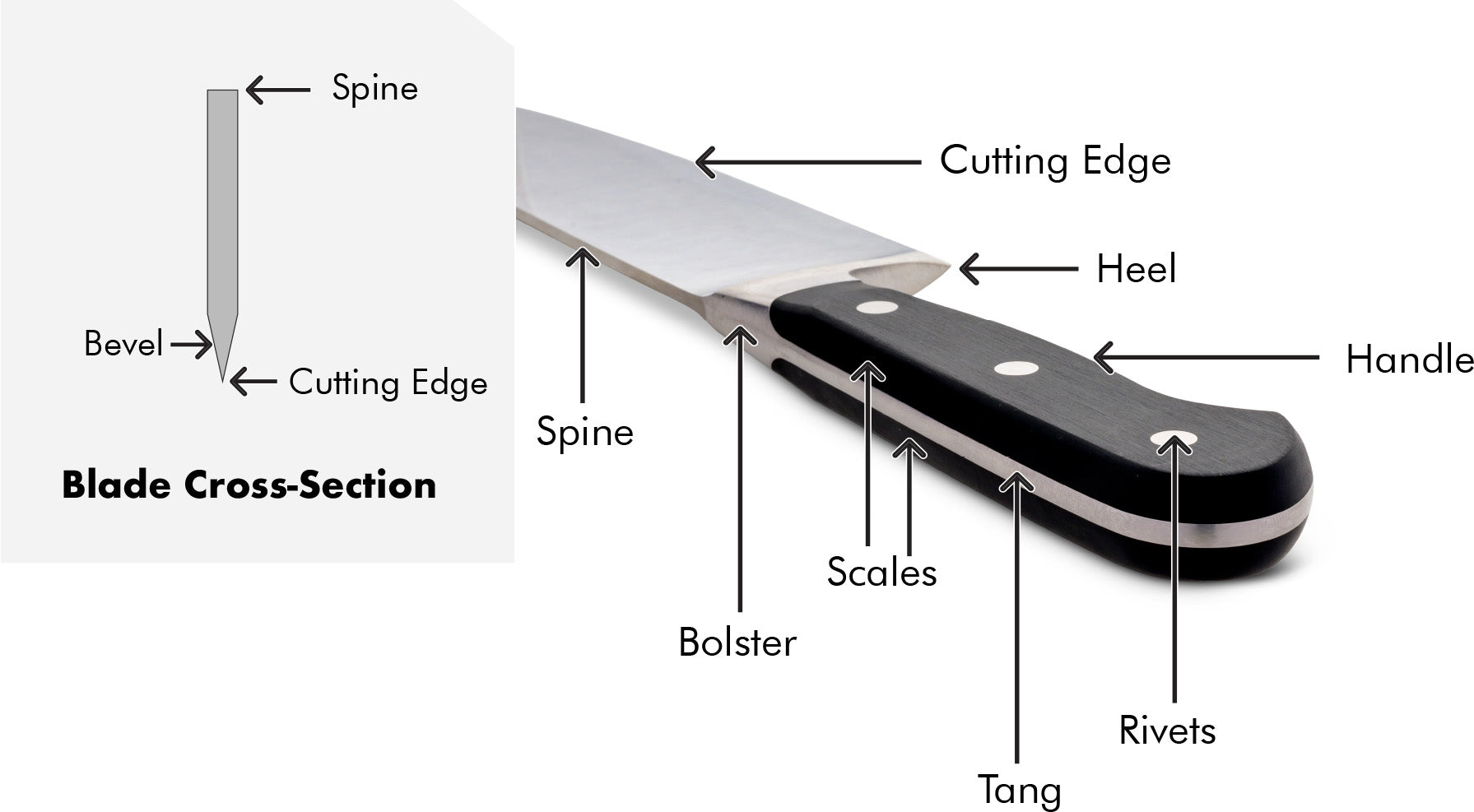
Knife Anatomy
German Double-Bevel With Full-Bolster
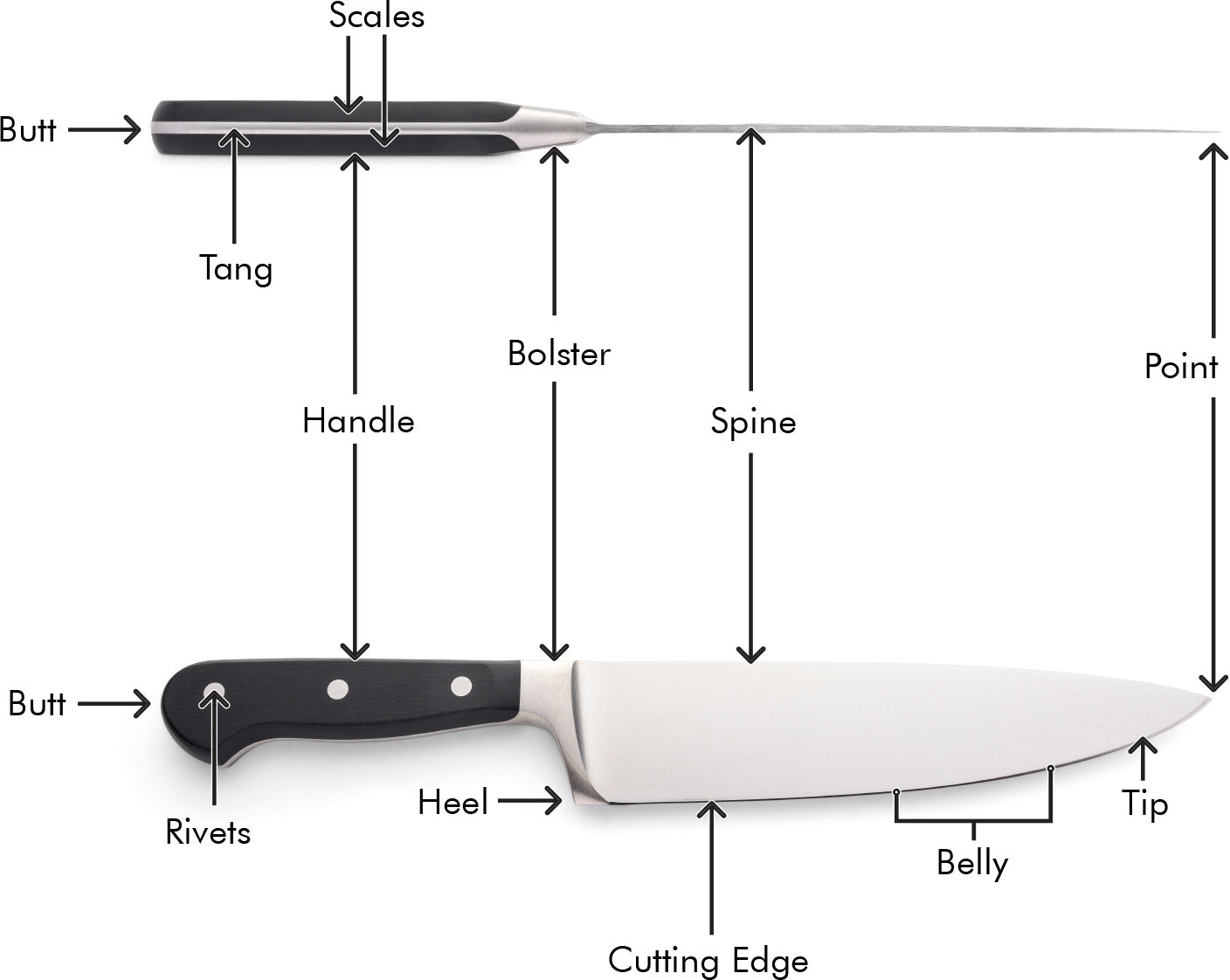
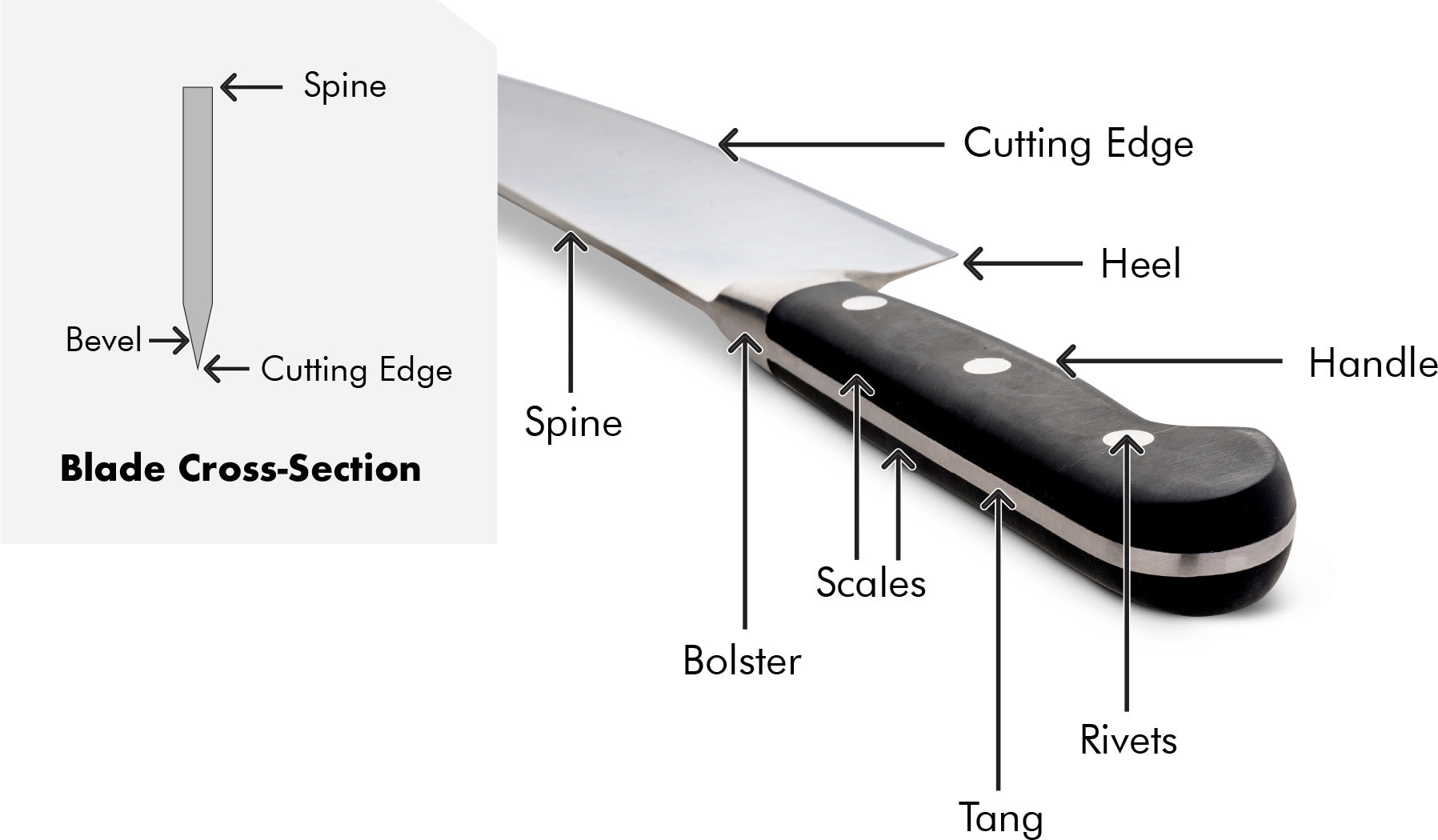
Knife Anatomy
German Double-Bevel With Half-Bolster
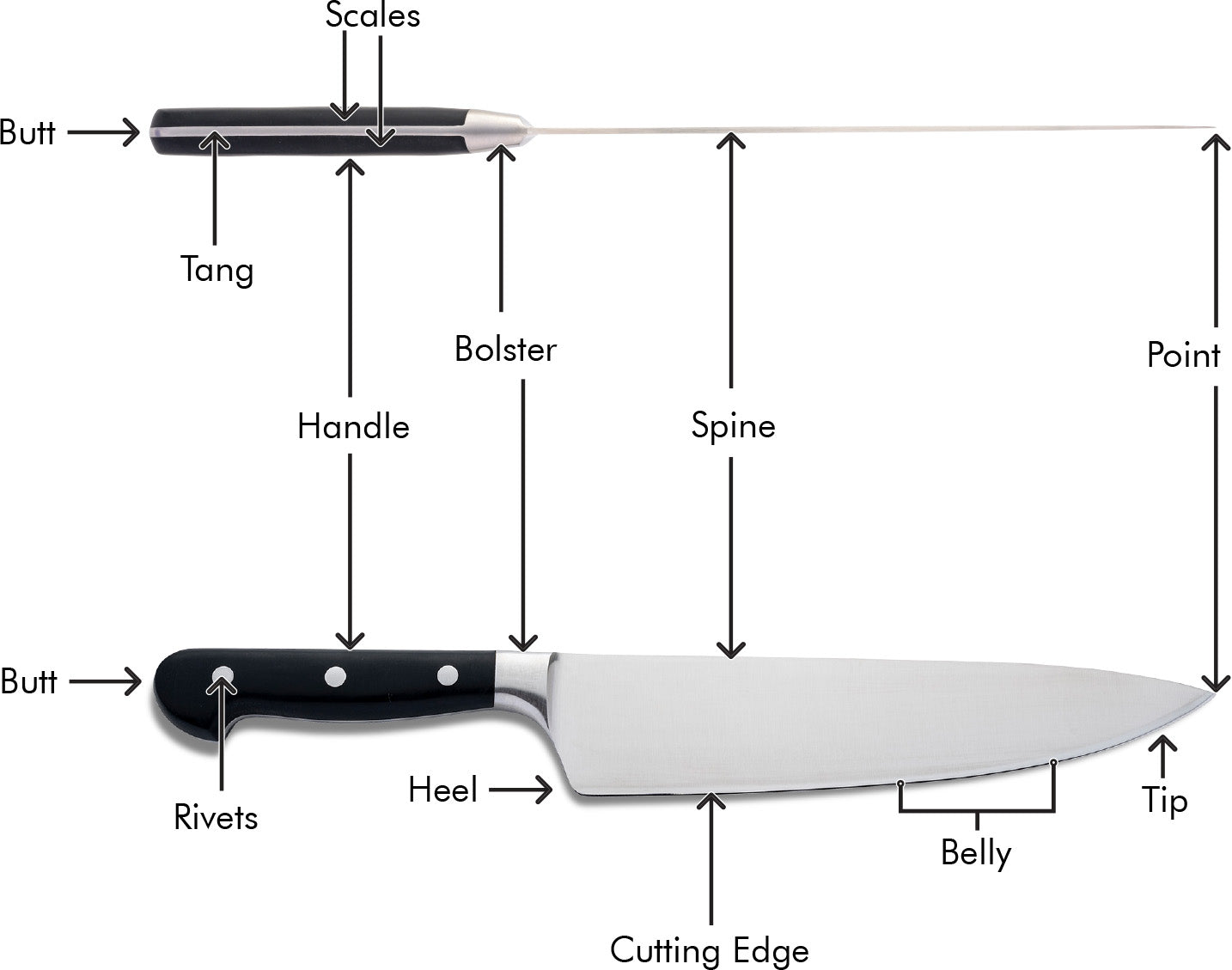
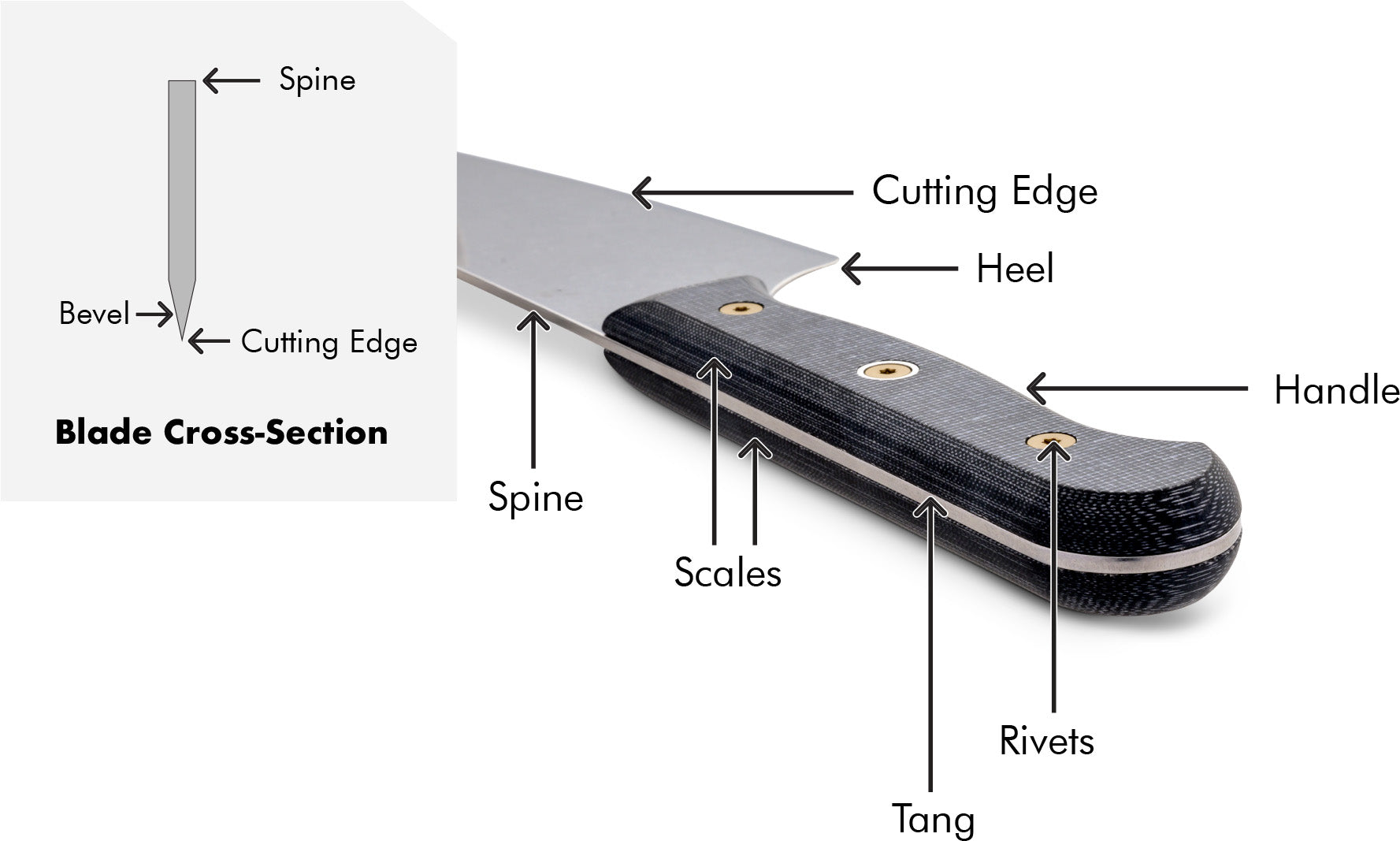
Knife Anatomy
German Double-Bevel With No Bolster
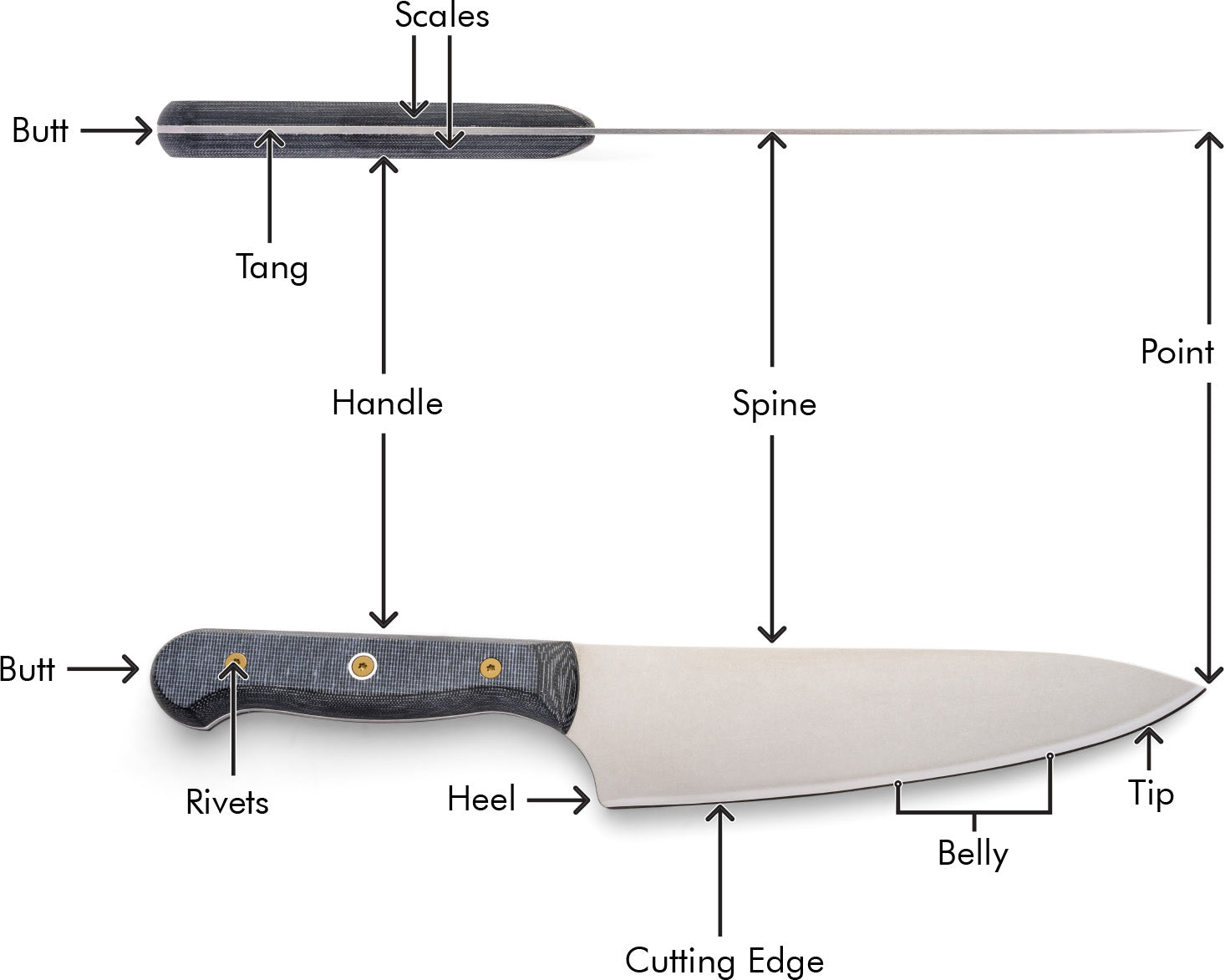
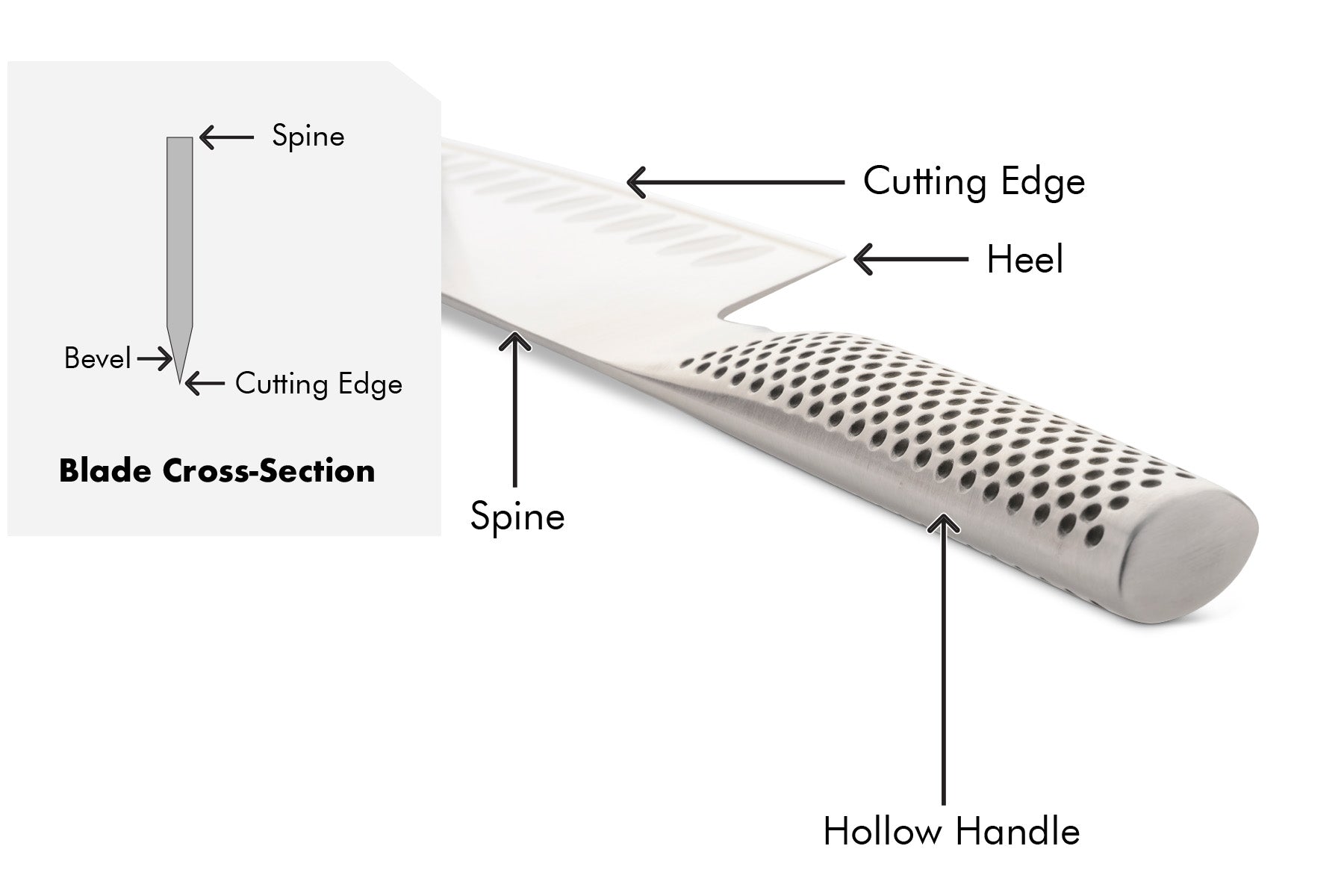
Knife Anatomy
Unibody Hollow Handle
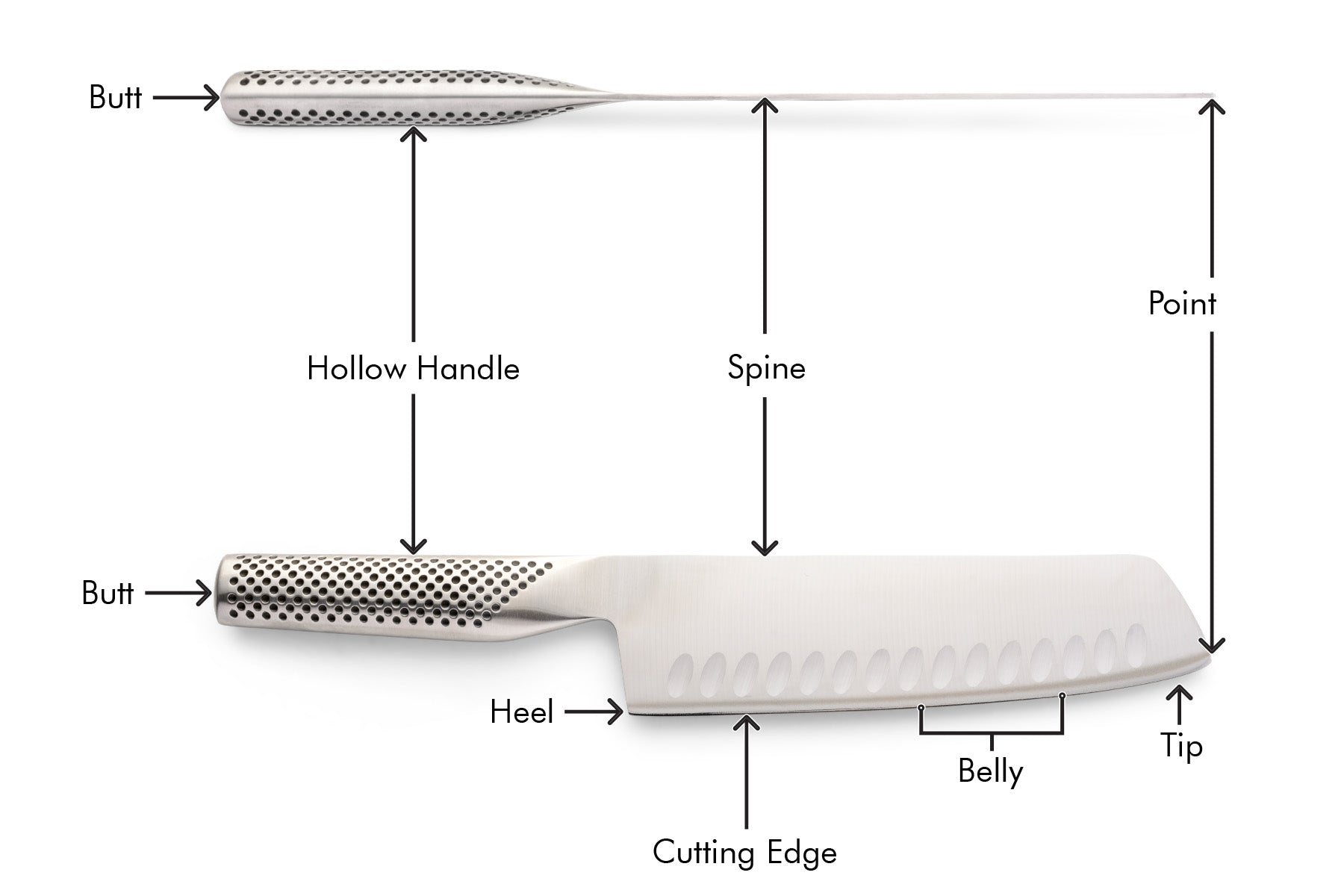
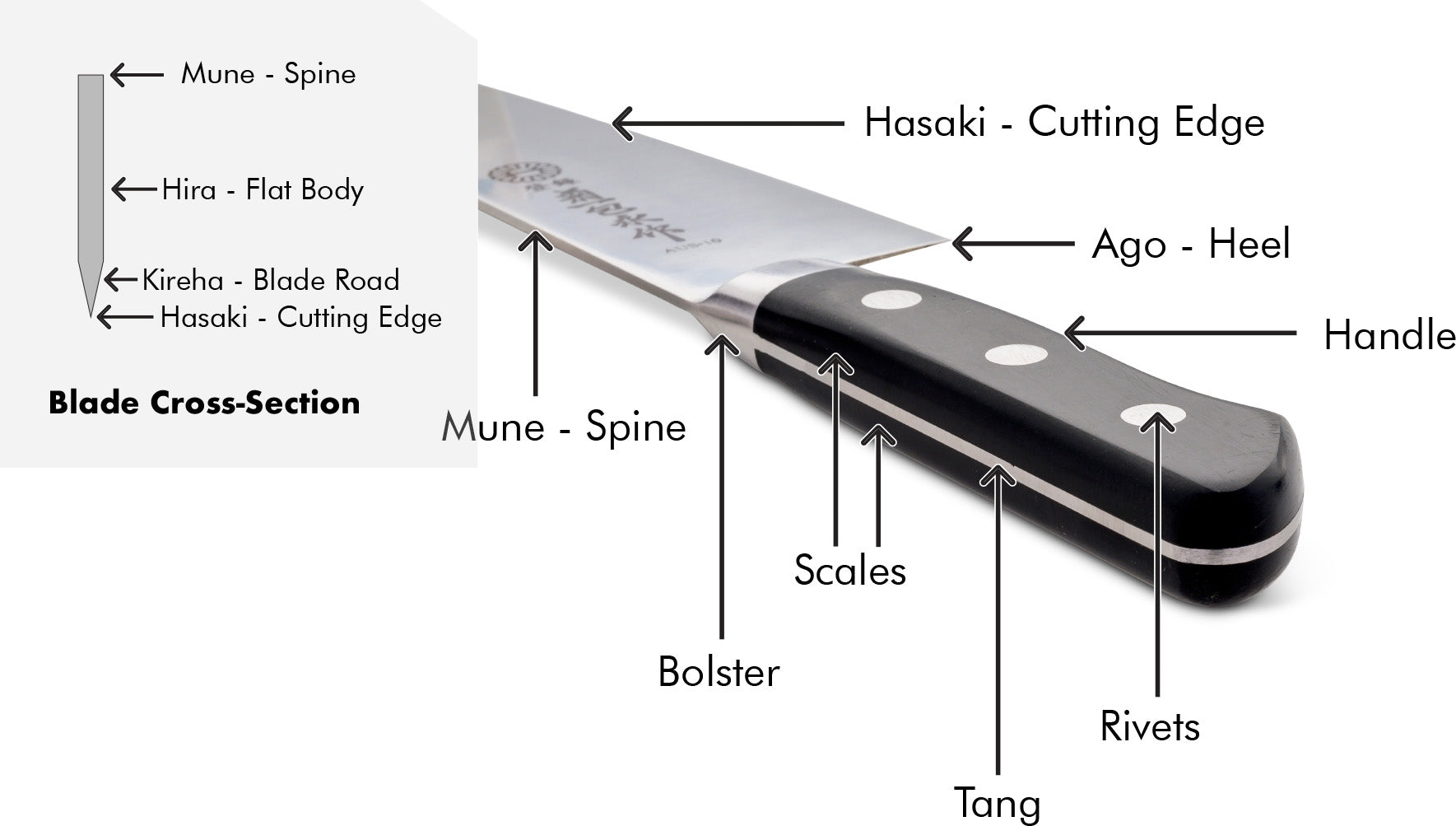
Knife Anatomy
Japanese Double Bevel With Western Handle (Only Bolster)
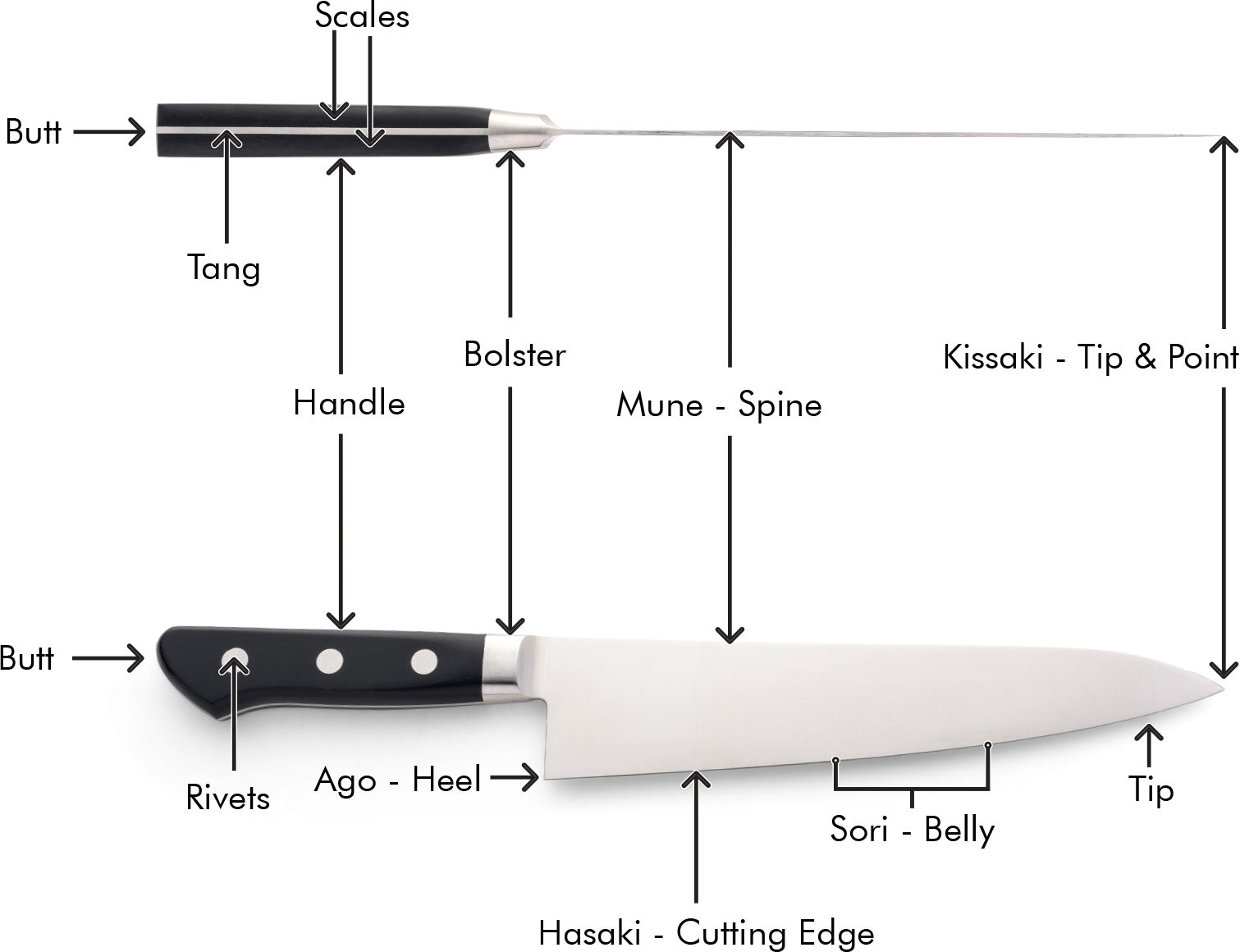
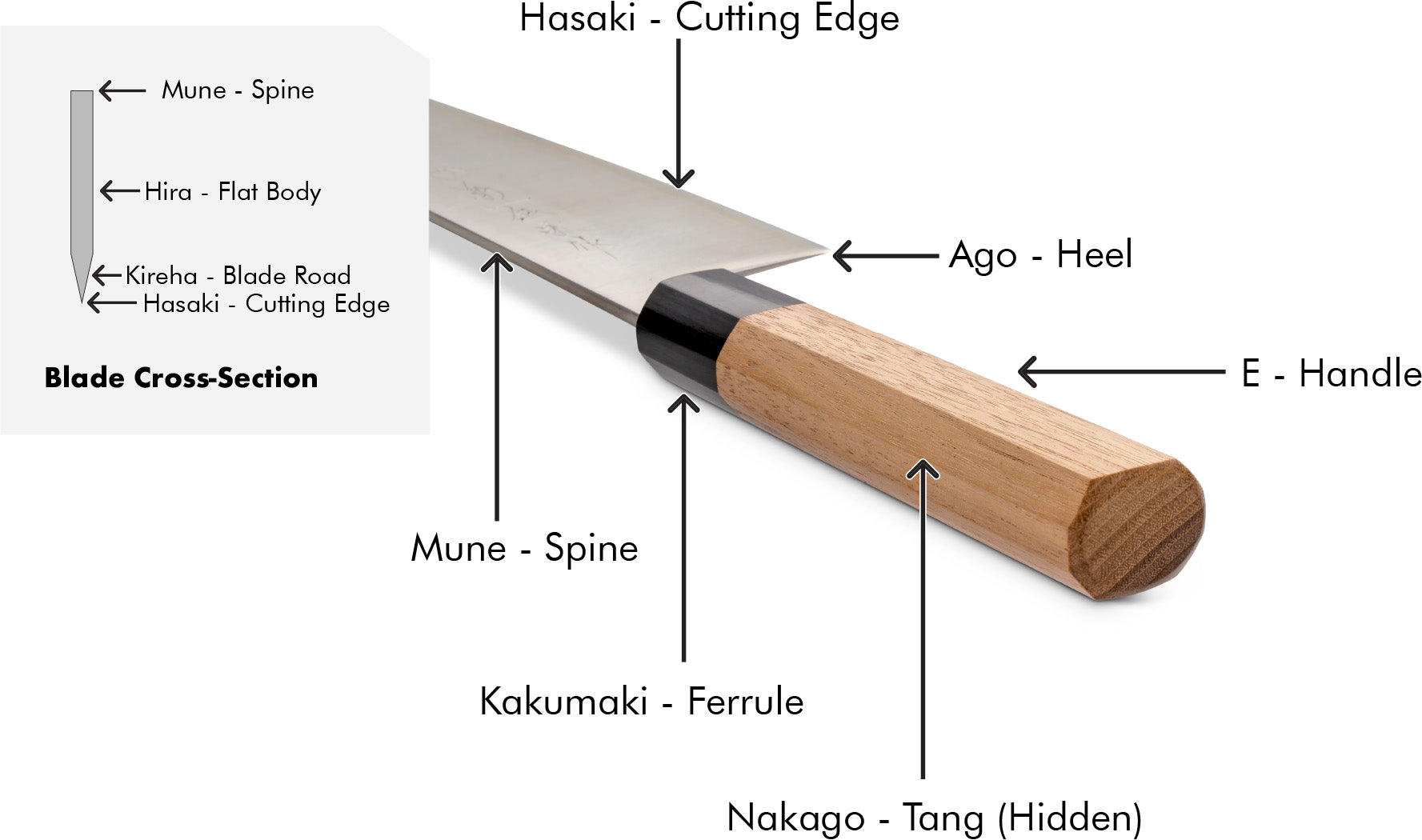
Knife Anatomy
Japanese Double Bevel With Wa Handle
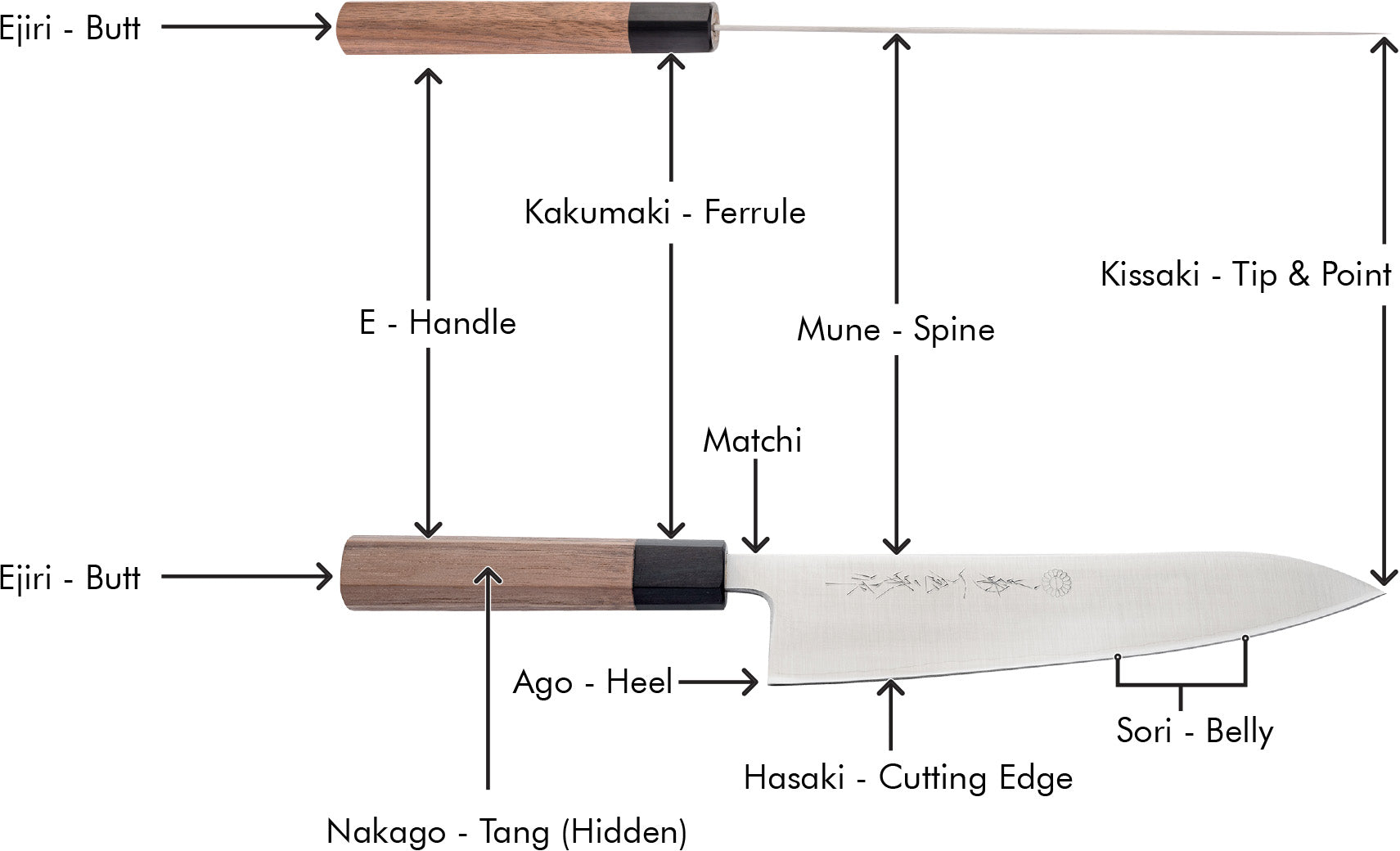
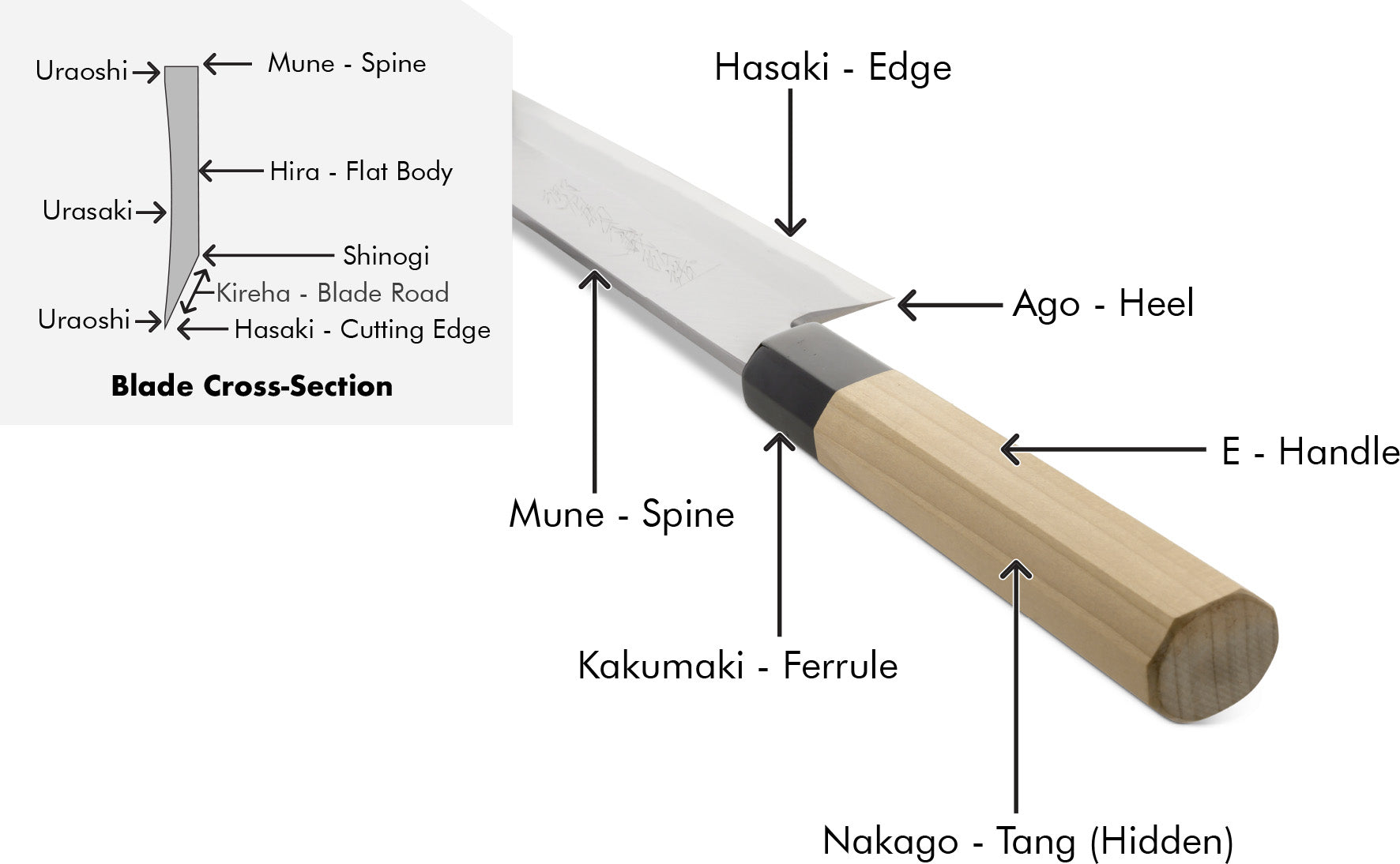
Knife Anatomy
Japanese Single Bevel With Wa Handle
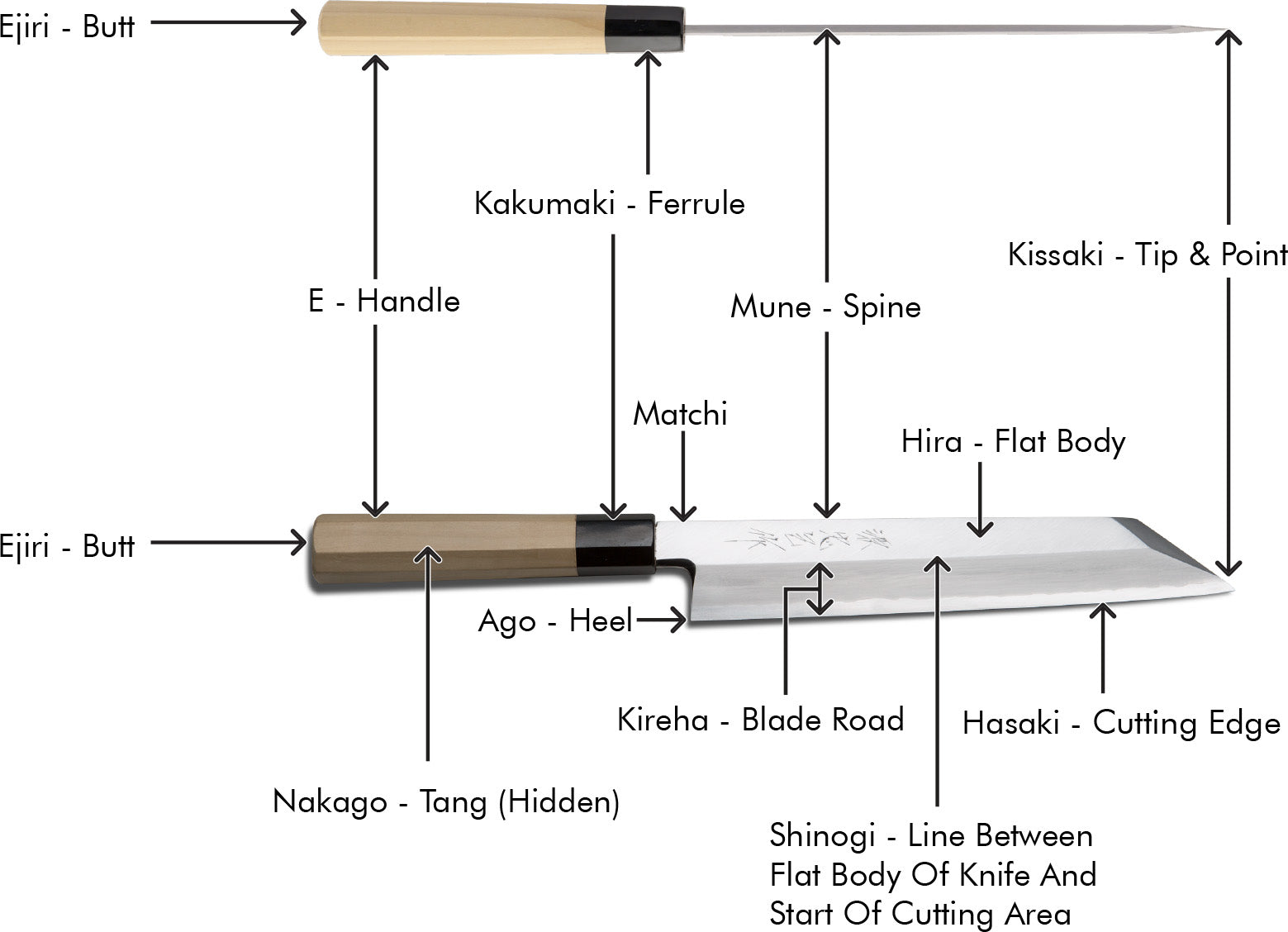
Bolsters
Knife designs vary within brand, maker, or country of origin. Western handles customarily include a Bolster, and their design will change with the maker’s prerogative or cultural predispositions. Traditional Japanese Wa-Handles (Hidden Tang) do not include a bolster; they typically have a Ferrule (Collar) commonly made from wood or bone. Bolsters are steel and can be integral or forge-welded. They have a taper towards the blade, which can be blunt or gradual. They are located where the handle meets the blade, helping serve as a connecting point. Generally, their purpose is to add weight and balance at the fulcrum point. Some Bolsters will drop down from the handle towards the heel of the blade, becoming a finger guard. They can simply follow the profile of the handle, offering balance to the knife. It’s a matter of preference for the user on what type of handle is best for their work.
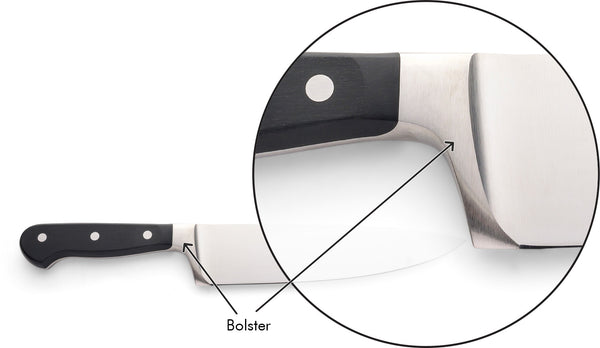
BOLSTERS
FULL BOLSTER
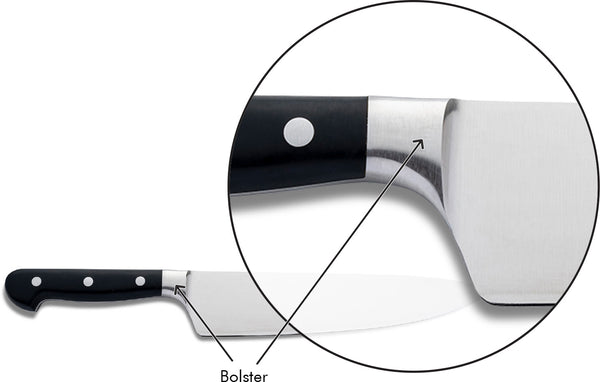
BOLSTERS
HALF-BOLSTER, SEMI-BOLSTER, DEMI-BOLSTER
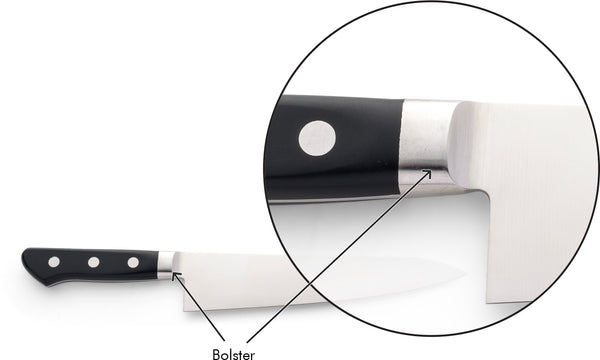
BOLSTERS
BOLSTER
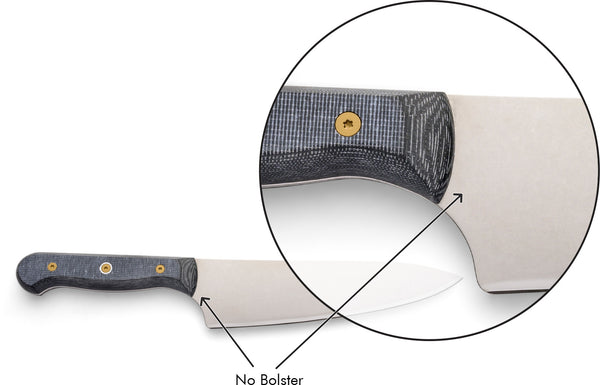
BOLSTERS
NO BOLSTER
Tangs
A knife’s tang is the portion of the blade that extends into the handle. There are different types of tangs. Different cultures have produced different styles. Tangs can be important in production costs, balance, weight, and feel.

TANGS
FULL TANG
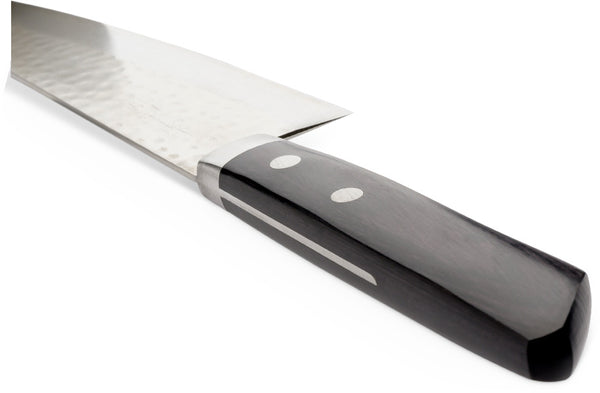
TANGS
HALF TANG
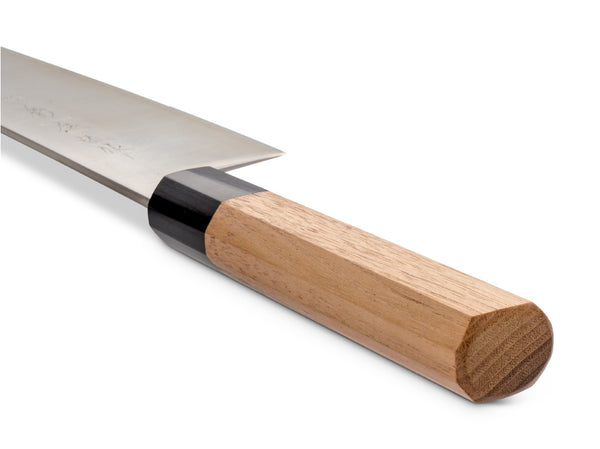
TANGS
HIDDEN TANG

TANGS
NO TANG UNIBODY - HOLLOW HANDLE
Handles
A knife’s handle is just as important as the blade. It’s what connects the user to the tool. Without a handle, a knife would be useless. A well- crafted, comfortable, and thoughtful design matters as much as the blade itself. Handles are attached to the blade’s tang in different fashions. Either a hidden tang, full tang, or half tang. A wide variety of materials for the handle can be used, ranging from natural wood, stabilized wood, micarta, resin, bone & antler, and metal.
Once again, there are variables or trade-offs. Certain materials may be visually appealing but may require some amount of maintenance. Trust your gut and intuition with how the handle feels in your hand. Get a feel for the overall balance and character of the knife when choosing it. Understand that you may change your grip depending on what you are cutting. Avoid ergonomic handles that are exaggerated, as they tend to force you to hold the knife in one particular manner, not allowing for versatility. This purchase will be a tool that you will want to love holding, using, and admiring for years to come.
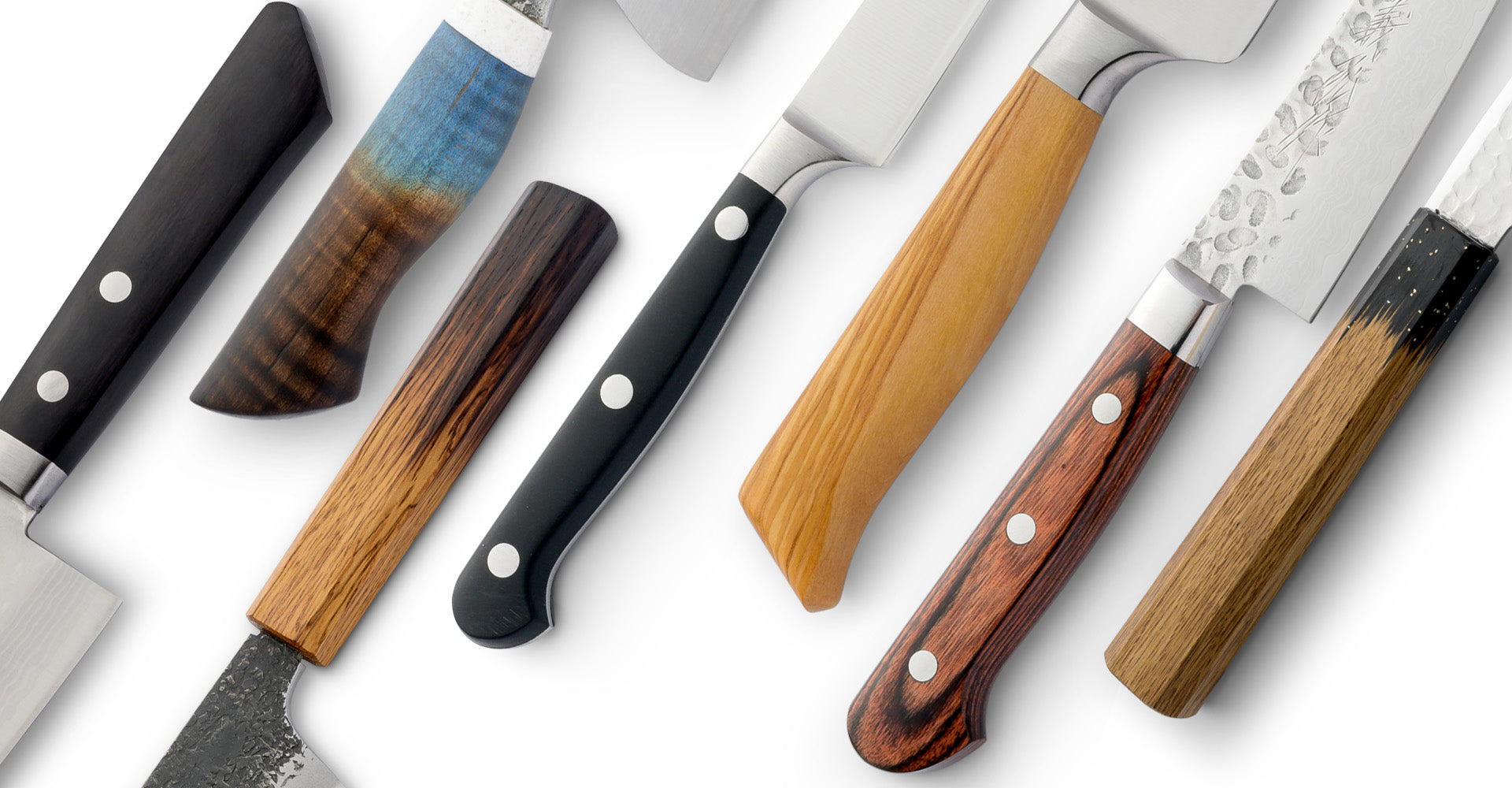
Click Each to Read More
Handle Materials
Common Or Exotic Hardwoods
Common or exotic hardwoods that derive from deciduous trees are also used, such as walnut, rosewood, magnolia, mahogany, cocobolo, and ebony. Make sure to treat the wood with a food-safe oil (mineral oil or cutting board conditioner) from time to time. This will help keep the wood supple and not crack in arid conditions or overexposure to water. Avoid oils that are not food safe or that can turn rancid, like vegetable oils.
Pakkawood
Pakkawood is made of quality hardwood laminates. These laminates are layers of resin- impregnated veneers. Pakkawood is durable and heat resistant. A natural look can be achieved, or the resin can be colored.
Stabilized Wood
Stabilized wood uses a pressure or vacuum process to impregnate the wood’s structure at the cellular level with certain acrylics or resins to improve structural stability, offering more durability. It’s common to see burled wood and bright colors used in this method.
Plastic
Plastic handles such as polypropylene, PP, and POM (polyoxymethylene) are common. These offer an affordable, durable option. Another cost-friendly option is TPE (thermoplastic elastomers). This is a rubberized plastic that is durable and creates a good grip when the handle is wet.
Micarta
Micarta is a resin-based material made from layers of canvas, linen, or other cloth. These layers are coated in resin and then compressed with heat. Micarta is lightweight and durable. Often micarta has a texture added which offers great grip.
G-10
Another resin-based material is G-10. Composed of a resin-based fiberglass laminate. Texture is often added as well. This material is very resistant to heat and water but tends to be a little heavy.
Learn Center
- Choosing a selection results in a full page refresh.
!

